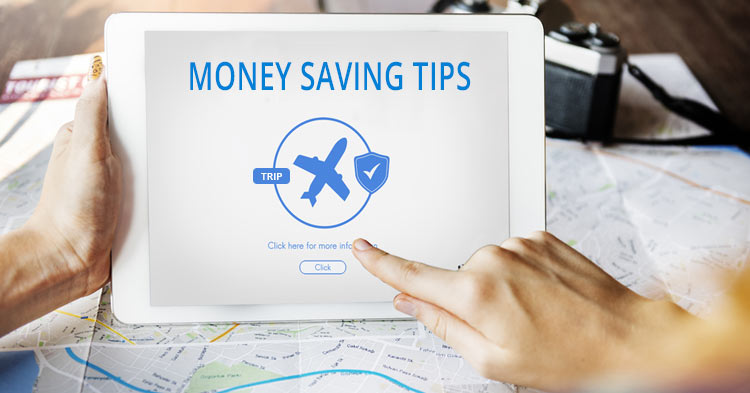OneInsure Blog
7 Government Schemes Every Indian Should Know About
We all know or have heard about Aadhar Card, Pradhan Mantri Jan Dhan Yojana, Public Provident Fund, and other popular Government-backed schemes. However, this article will go into the lesser-known ones that you may not have heard of, but are beneficial for you. We have tried our best to keep these schemes’ track records in mind, but we have also added a couple of schemes whose use the OneInsure Research Team thinks will rise a great deal in the coming years.
Indian Railways Insurance
Launched in Sept 2016, this optional scheme gives travellers who book long-distance-travel tickets through the IRCTC website to avail insurance that works like Personal Accident insurance for a premium of just 92 paise per passenger. Comparatively, the benefits are much larger:
- Nominee receives a compensation of Rs 10 lakh in the event of death
- Compensation of Rs 10 lakh in the event of total disability
- Compensation of Rs 7.5 lakh for partial disability
- Compensation of up to Rs 2 lakh for hospitalisation expenses
- Rs 10,000 for transportation of mortal remains from the place of the train accident
This scheme is not applicable for people travelling in passenger and suburban trains.
Standup India
This scheme, which encourages entrepreneurship among women and members of the SC/ST communities, was launched in April 2015 by the Prime Minister Narendra Modi.
The scheme offers bank loans ranging from Rs 10 lakh to Rs 1 crore for greenfield (fresh) enterprises in Manufacturing, Services, or Trading industries (non-farming). Here are some other benefits for those who avail this scheme:
- Lowest possible interest rates assured
- RuPay debit card for withdrawals
- Pre-loan training, loan facilitation, marketing support
- Dedicated web portal
DigiLocker
Aimed at reducing the need to carry physical documents around wherever we go, this mobile application is a part of the Digital India campaign of GoI. Although DigiLocker is still in the growth phase, we foresee it will become far more popular in the coming years. It is basically a digital locker that allows you to store your documents on the cloud. You need your Aadhar Card number to validate your account.
As of now, its uses can be categorized into three functionalities:
- Save all Government-issued identity documents here. For example, Aadhaar Card, PAN Card, Driving License, Vehicle RC, Secondary School Certificate or equivalent, Higher Secondary Certificate or equivalent, relevant marksheets, and many others.
- Government agencies and other entities send your IDs and certificates to DigiLocker directly. For example, a large number of hospitals recently agreed to upload patients’ medical documents and test reports directly into the patient’s Aadhar-linked DigiLockers.
- Lastly, using the DigiLocker, you can send requested documents from your saved documents to certain Government agencies and entities that accept them.
Sukanya Samriddhi
Launched in Jan 2015, this scheme is part of the Beti Bachao, Beti Padhao campaign of the Government. A Sukanya Samriddhi account can be opened in any office of India Post or the branch of certain authorized commercial banks. It is essentially a deposit scheme to meet the education and marriage expenses of the girl child. Here are some features:
- A Sukanya Samriddhi account can be opened with the minimum deposit of Rs 1,000. Thereafter, deposits will be in multiples of Rs 100. The maximum deposit amount per account per annum is Rs 1.5 lakhs. The current interest rate is 8.1%.
- The account can be opened any time after the birth of a girl until she turns 10. The account will remain active for a period of 21 years after opening or until the marriage of the girl after she turns 18.
- Deposits in Sukanya Samriddhi accounts have to be made till the completion of 15 years from the date of account opening. For a girl child of 9 years, deposits need to continue till she turns 24. Between ages 24 and 30, when the account matures, the account keeps accruing interest on the balance.
- Only one account can be opened per girl child and no more than two accounts per household (in case of twins or triplets, three accounts is the upper limit).
- Once the account holder turns 18, partial withdrawal of up to 50% of account balance can be claimed, allowing her to pursue higher education.
- Tax exemption under Section 80C up to Rs 1.5 lakhs.
Post Office Monthly Income Scheme (POMIS)
Remarkably easy to open and operate, a Post Office Monthly Income Scheme (POMIS) account is ideal for those who happen to have a good amount of money lying in the bank account and want to put it to work without any risk of losing the capital amount. Let’s look at some features:
- Invest up to Rs 4.5 lakh individually or Rs 9 lakh jointly for an investment period of 5 years. Minimum amount is Rs 1,500. Currently, the interest rate is 7.3%. Interest accrued is deposited monthly.
- Accounts can be opened for minors above the age of 10 too. The investment cap for them is Rs 3 lakh. They can avail the funds once they turn 18.
- Reinvesting monthly interests into an SIP is an option that opens up for you.
- At maturity, you get your entire capital back. You may, however, also reinvest the corpus in the same scheme for another 5 years and get double benefits.
BHIM
Launched in December of 2016, immediately after Demonetisation, this multi-faceted mobile app named Bharat Interface for Money (BHIM) is slowly and steadily finding wider usage among the country’s populace. Here’s why:
- Super-fast transactions and money is received instantly. Three-layered security ensures money is always safe.
- Option to send money in a variety of ways – through phone number, Account Number + IFSC, Aadhar Card number, through a generated QR Code.
- Clean interface, uncluttered look and feel, and perfect for those who are not that tech savvy.
- The receiver of funds need not have BHIM, PayTM, or even a smart phone. S/he just needs to have a bank account.
- No concept of holding money in eWallets – BHIM transactions are from one bank account to another.
- One app for multiple bank accounts. With BHIM, you can effortlessly change between bank accounts to transact, check balance, or receive funds.
- Recently added functionality to pay utility bills.
This is being developed under the Digital India campaign and we see this app as being much bigger in the future.
Pradhan Mantri MUDRA Yojana (PMMY)
This was launched in April 2015. Under this scheme, loans up to Rs 10 lakh are provided to non-corporate, non-farm small or micro enterprises. These loans are given by commercial banks, RRBs, cooperative banks, small finance banks, MFIs, and even NBFCs. Apart from the option to approach any of these institutions, the borrower can also apply online through the PMMY portal (https://www.mudra.org.in/). Currently, PMMY offers three products:
- Shishu – Loans up to Rs 50,000
- Kishore – Loans from Rs 50,000 and up to Rs 5 lakh
- Tarun – Loans from Rs 5 lakh and up to Rs 10 lakh
Notable Others
- UMANG app – Access over 1,200 Central and State Government services through this app.
- Pradhan Mantri Jeevan Jyoti Bima Yojna (PMJJBY) – Life cover of Rs 2 lakhs at just Rs 330/year. Be sure to let someone close to you know about this; for example, your driver or maid servant.


 Comments
Comments

 Government Schemes, Narendra Modi, Aadhar Card
Government Schemes, Narendra Modi, Aadhar Card



